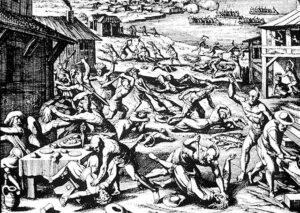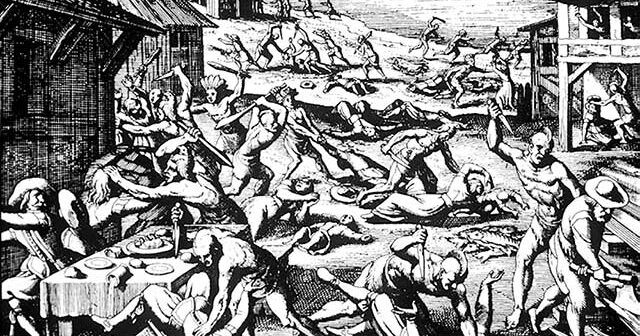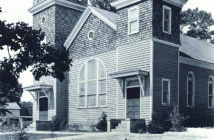
Featured above is a 1628 woodcut by Matthaeus Merian published along with Theodore de Bry’s earlier engravings in 1628 book on the New World. The engraving shows the March 22, 1622 massacre when Powhatan Indians attacked Jamestown and outlying Virginia settlements. Merian relied on de Bry’s earlier depictions of the Indians.
From 1619 to 1622 bog iron was smelted in an iron furnace at the mouth of Falling Creek. John Berkley was selected to manage the construction of the ironworks. Several settlements also existed from the falls which is now at Richmond to Jamestown. Coxendale, Bermuda Hundred, Farrars Island and Kingsland among others which Sir Thomas Dale governed after he return from England to restock Jamestown to find the settlers dying and living in filth.
During the time period leading up to 1622 the natives were getting restless and settlers found it increasing difficult to work and live their day to day lives.
On March 22, 1622, Good Friday, during a widespread massacre two children who hid in the bush along Falling Creek were the only ones to survived the attack at the ironworks. The attacks would burn through settlements down the James River to Jamestown.
One positive story of the day that lives until today is that of Mistress Allis whose husband was away in England. She rallied her workers and defended her home from the attack for a number of day but when forced to do so by a rescue party sent out from Jamestown.
Featured above is a 1628 woodcut by Matthaeus Merian published along with Theodore de Bry’s earlier engravings in 1628 book on the New World. The engraving shows the March 22, 1622 massacre when Powhatan Indians attacked Jamestown and outlying Virginia settlements. Merian relied on de Bry’s earlier depictions of the Indians.


